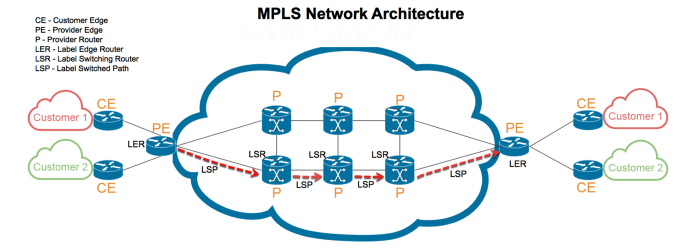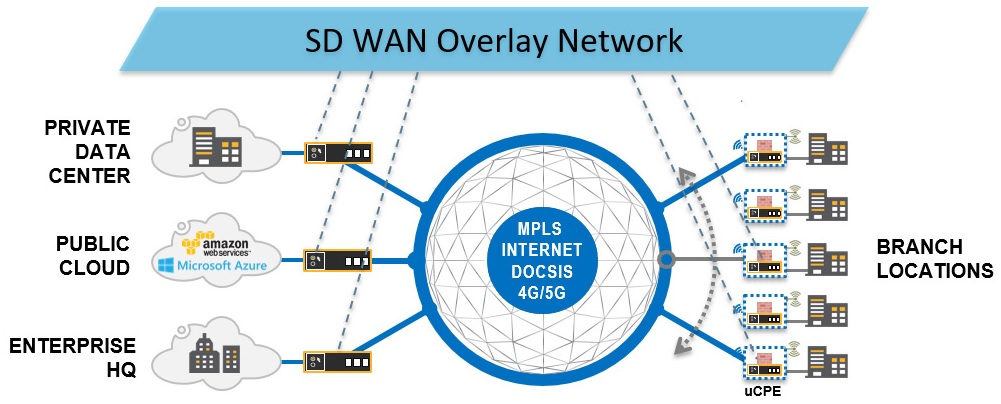As intelligent as networks are, they’re not always as intelligent as we’d like them to be. There’s no better example of this than the routing of data. How data is transported – and, specifically, prioritised between each router – underpins network optimisation in enterprise contexts.
The efficacy of a message is impacted by the speed and reliability of its delivery. Enterprise requires a routing solution that intelligently prioritises real-time traffic: the bandwidth required for a meeting should always be prioritised above the bandwidth required for Netflix, for example. But whichever routing technique we use on WANs, or a combination of thereof, it’s also important that we maintain the ability to monitor all network traffic.
Introducing MPLS
Luckily, for private networks, such a solution exists. Multi-protocol label switching (MPLS) is a routing technique that routes data through the shortest path available by attaching additional information to each packet: i.e., a more specific, detailed labelling address for each packet sent. It avoids complex routing table lookups – using short path labels rather than long network addresses – and speeding traffic flows.
More simply, it helps to establish highly efficient routes for data packets, thereby optimising network performance. Think of an expedited postal delivery service for enterprise-specific packages. The first time a packet enters the network, MPLS assigns it a specific forwarding equivalent class (FEC). A table indicating how to handle packets of a specific FEC type is stored on each router. This means that routers don’t need to perform header analysis; instead, subsequent routes use the same label to retrieve a FEC for each packet.
As a consequence, MLPS has the ability to handle packets with particular characteristics, such as those from specific applications, consistently. The routing of traffic associated with, for example, video conferences and other real-time applications is expedited by mapping it to low-latency routes. This ensures that critical use cases and systems are prioritised.

SD-WAN
So, with MPLS, we have a way to ensure high-priority traffic is prioritised over low-priority traffic. The traditional limitation to MPLS, however, is that it’s only relevant to private, corporate networks, and remapping network pathways is a lengthy process. To rectify this, a new technology was recently introduced, earmarked by some as a potential substitute to MPLS: SD-WAN (Software-Defined Wide Area Networks).
SD-WAN makes it possible to route corporate traffic over ordinary internet connections, and is an ostensibly more flexible and cost-effective WAN solution. But rather than replacing MPLS, SD-WAN is better suited to augment MPLS WANs.
SD-WAN is a transparent-agnostic overlay able to route any type of traffic, including MPLS. Its key advantage is the visibility it provides: with it, an enterprise WAN-traffic architect is able to sit, monitor, and apply policies across connected WAN devices from a central point.

SD-WAN and Scrutinizer by Plixer
MPLS will always be a valuable technique for guaranteeing performance of real-time traffic for applications that require it. A mix of the two solutions best befits modern WANs; MPLS for time-sensitive, real-time applications and systems, and SD-WAN for efficient routing. SD-WAN ensures flexibility and cost-effectiveness, while MLPS guarantees network performance. Either way, both types of traffic can and should be monitored – and, with Scrutinizer, they can be.
Using Scrutinizer, network managers are able to see not only the quantity of traffic traversing a network, but monitor the paths taken, including the reasons why and whether more efficient routing is possible. Whether you end up using more of SD-WAN or MPLS in your WAN, or one entirely over the other, understanding performance metrics that make up the network – and how to make changes for future optimisations – is critical.
To see Scrutinizer, Plixer’s network monitoring solution in action, start your 30-day free trial. Alternatively, to discuss MLPS and SD-WAN implementations and how to maintain monitoring over complex networks, contact us today.


